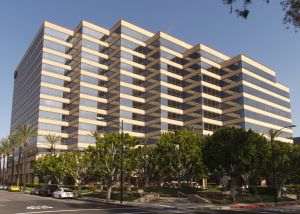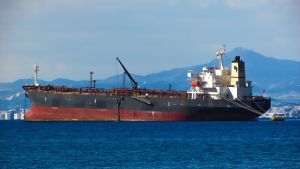(Interview with the National Physics and Nuclear Engineering Institute "Horia Hulubei" - IFIN)
Reporter: Can you tell us about the level of the involvement of the IFIN with the European Organization for Nuclear Research (CERN)?
Dr. Sanda Diţă: The IFIN has participated in the Research & Development stage with the CERN in setting the subdetector project for ATLAS (ed. note: monitoring instruments), when its final version was not approved, since we were talking about several simultaneous projects.
Dr. Nicolae Victor Zamfir: All of these collaborations of the IFIN - four, in the case of LHC (ed. note: Large Hadron Collider - CERN's particle accelerator) - don't happen out of the blue, they are the result of cooperation which is developing and they reach the moment where proposals for subsequent cooperation are made, just like it has happened with ATLAS. When the building of the LHC was discussed, proposals were made, and the Romanian group was part of these activities which preceded ATLAS.
Dr. Sanda Diţă: Since 1992, 1993, Romania has participated in research projects, where one would get to choose the final version for each subdetector which was going to be part of the ATLAS detector.
Reporter: And has the cooperation of the IFIN with CERN been fruitful? What benefits did it bring?
Dr. Nicolae Victor Zamfir: First of all, joining the CERN, on the proposal of the IFIN, occurred gradually to allow us to adjust economically: the budget of the CERN is one billion Euros/year - used exclusively for R&D.
Dr. Sanda Diţă: CERN is very interested in expanding into Europe, but Romania has benefited, mostly, from the computing power available domestically (ed. note: it has substantially contributed to the processing of experiment data).
Dr. Nicolae Victor Zamfir: Romanian physicists have proven their usefulness in these collaborations, and we often say that physicists have joined the EU long before 2007.
Dr. Sanda Diţă: The collaboration was fruitful, especially for young researchers and physicians, through the opportunities which were being offered to them.
Dr. Nicolae Victor Zamfir: Also, Romania is involved in 7 collaborations with CERN, of which 4 are connected to LHC: ATLAS, Alice, LHCB, LGC.
Anticipating that the accelerator would generate a huge volume of data, CERN, has imagined a computing system called Grid, distributing the calculation power all of over the world, using a pyramid system - Romania is among the top 100 centers in the world (tier 2). The system offers the possibility of processing the computations from anywhere in the world, enhancing the computing power. We should also remember that CERN has laid the foundation for the world wide web, out of the desire to maintain contact for the various experiments.
Reporter: What can you tell about the experiments for the discovery of the Higgs boson?
Dr. Sanda Diţă: The existence of the Higgs boson is predicted by the Standard Model (MS), a model which was experimentally verified by CERN, and there is no deviation. Higgs was the only missing piece, but all the other provisions were in line with the experiments. The Higgs boson explains the disruption of the electroweak symmetry (ed. note: to make it comprehensible, the notion describes the phenomenon of moving from disorder to order, within a system), and the pressure for finding it was huge, as ATLAS was aimed exactly at studying the processes which would reveal the boson.
Definitely, the experiments will continue with determining the nature of this particle, using certain, scientific data, including the properties of the boson, a huge effort has been focused on continuing the deep study of this Higgs boson.
Reporter: Why is the discovery important, in the context of the completion of the Standard Model?
Dr. Sanda Diţă: It explains the mechanism which details, in turn, why particles have mass, then going back to understanding the Universe, matter - the implications are huge. But there is no scheme without a flaw and this can't explain everything - for example, dark matter (ed. note: matter which it is speculated would explain the majority of the mass noticed in the Universe - it is called dark matter because it can't be observed directly). It is hoped that it will get to a more complex scheme which will include MS, but will not contain developments beyond that.
Dr. Nicolae Victor Zamfir: Let me explain it to you in another manner: once you progress, you have other horizons to discover, to research. For 50 years, this has been the MS. The particles which have been predicted, have begun being discovered, one after another. At this moment, there are still a few years of during which time knowledge will be reinforced. For now, a particle has been revealed which disintegrates in the manner in which it was predicted it would and it has the necessary mass, but it remains to be seen if it is the Higgs boson. But it is clear that it will be a new particle.
Dr. Sanda Diţă: The probability of the discovery being a background fluctuation (ed. note: an accident) is 10 in the -7th power.
Dr. Nicolae Victor Zamfir: After completion, the exploration of new models will begin, such as dark matter or the symmetry breakup.
Even in the case of protons and neutrons, not everything is known, due to the nuclear force (ed. note: fundamental force which is so powerful that it does not allow the separate study of the elementary particles which make up protons and neutrons). Humanity will come to a point where it tells itself: let's see what lies ahead. Taking into account the history of modern science, we can consider that there will be other discoveries in this sector as well.
Reporter: What does the 5 sigma level of confidence represent for the discovery of the particle?
Dr. Nicolae Victor Zamfir: As a rule, the results are rendered using sigma, +/-, within a margin for error interval, with a certain likelihood. CERN has adopted a very drastic 5 sigma criteria. But both parallel experiments of the CMS and ATLAS have offered a 5 sigma level of confidence (ed. note: high level of confidence, obtained through two independent studies).
Reporter: How is it supposed that the Higgs boson creates mass in the elementary particles?
Dr. Nicolae Victor Zamfir: There is a field, the Higgs field, with the notion of particle-wave duality (ed. note: a property which is also shared by light), and due to the effect, the interaction with the Higgs particle creates mass where it didn't exist before. The field generates particles, which, in disintegrating, grant mass. Higgs is Adam and Eve, the first particle which gets created.
Dr. Sanda Diţă: The particles gain mass in the interaction with this field, but the field needs mass bearing particles. This is where the Higgs boson comes in.
Dr. Nicolae Victor Zamfir: However, the vision on the process needs to be a primordial one, of the first moments of the Universe, the first moments of the Big Bang.
Dr. Sanda Diţă: It is being extrapolated in the understanding of the universe, a more complete understanding of how it occurred. But no one can yet tell, what the consequences of some steps which are made in understanding the matter are.
Dr. Nicolae Victor Zamfir: But all the data we have so far are consistent with the simple image of the Big Bang.
Reporter: Can there be any question of practical applications at this time following the discovery?
Dr. Sanda Diţă: We can't anticipate practical applications at this moment, but they could potentially be huge. Essentially, it is impossible not to have collateral effects that won't be useful and applied; for instance, when CERN set up for the first time the world wide web, no one could have anticipated the huge impact it has come to have nowadays.
Reporter: When do you think there can be a confirmation of the discovery of the Higgs boson?
Dr. Sanda Diţă: It is very possible that by the end of the year, when the LHC will be halted for the next year and a half, the discovery of the Higgs boson will be officially confirmed, but nobody at CERN has made any commitment or set any deadline.
But we are thrilled that without a doubt, it is a new particle, which will open a new fascinating area of study, and to set its properties in a rigorous manner. It is amazing, considering that we are going to the essence of things, to the structure of matter, to how the universe was created, to the most important issues, steps are being taken towards the deep understanding of matter - an action which has hard to predict repercussions.
Reporter: What other projects does the LHC have set up next, after this discovery is confirmed?
Dr. Sanda Diţă: In the medium term, the LHC will begin reaching a high luminosity, and once it is reached, it the study project High Luminosity LHC will begin. Also happening in parallel will be the upgrade of the detectors. There is also a project to switch to the High Energy LHC stage, to double the energy, to 33 TeV, but this is just a tentative stage. It is a planning which is impressive. The people of CERN are not unprepared and they are not without plans for the future when it comes to the area of particle physics.
• The biggest laser in the world, at Turnu Măgurele
Reporter: On July 4th, the government has approved the technical parameters for an investment of 389 million Euros, for building the most powerful laser in the world, at Turnu Măgurele. What can you tell us about the Extreme Light Infrastructure (ELI) Project?
Dr. Nicolae Victor Zamfir: it concerns the effect of an extremely powerful electromagnetic field on these loaded particles (ed. note: elementary) which change our image, because they do not exist in nature (ed. note: the fields). One of the predicted effects is that matter gets created out of nothing.
The application is financed using Structural Funds and we await the official approval. The European level dialog, however, has completed. In the coming weeks will begin the implementation, which has two stages.
The first, the major acquisition part, which follows the Law of Public Procurement, which deals with the building and the machinery: the lasers and the gamma beam.
The second, the experiment part, which concerns putting in place all the experiments, meaning that we hope that by January 1st, 2017 it will be operational.
Reporter: And what does this new project represent? What novelties does it bring in the area of nuclear physics?
Dr. Nicolae Victor Zamfir: In the field of science, the ELI brings a new direction which has never been explored anywhere else in the world. We are expecting scientific effects, findings, rather interesting for this model - because particles are being created out of nothing. Properties of the interaction of high powered lasers with matter will be studied, which it is estimated will have many applications: biological, industrial, using materials with special properties. The visible and invisible radiation fields have effects on matter and you can create materials with special properties.
Also stipulated is the creation of new radioisotopes which are not created under normal circumstances; in radiopharmaceuticals, they are the result of nuclear fission reactions, as through the fission of uranium over 300 radioisotopes are created and extracted. But, as part of the ELI, there is the creation of some cheaper and more efficient isotopes, which can not be created in fission reactors.
Reporter: And what does the ELI mean for Romania?
Dr. Nicolae Victor Zamfir: This infrastructure puts Romania on the scientific market, there will be over 200 researchers present, it will be a European center, but it will be open for researchers from all over the world.
Dr. Sanda Diţă: I want to mention that an infrastructure of such complexity was seen in the West as a great achievement in "new European countries".
Dr. Nicolae Victor Zamfir: There is also a political motivation for the granting the project to the three countries (ed. note: the project includes two more pillars, in Hungary and the Czech Republic). The first goal is to stop the "brain-drain" (ed. note: the departure of gifted young people from the country), to have a powerful infrastructure in this area of Europe. Second of all, it is the desire to spend the structural funds, used only for infrastructure ad research.
The Romanian pillar provides two lasers as well as the gamma beam, which the other countries do not have. The combination of visible/invisible light will increase its efficiency. The beam will be the most powerful of its kind in the world, over 1 million times more powerful than any other. Europe will dominate Japan and the US in this regard.
Reporter: And the other two pillars?
Dr. Nicolae Victor Zamfir: The Czech Republic and Hungary will each have a laser, and the research will be complementary. The Romanian party is dedicated to nuclear physics, because the lasers act against the loaded particles with an extremely great power and the interaction of high powered lasers with matter will be studied, a subject which very little is known about.
Reporter: Thank you!
CERN has a budget of one billion Euros/year - used exclusively for R&D.
2
Physicists have integrated Europe long before 2007.
3
CERN has laid the foundation of the world wide web, through its desire to maintain contact between the researchers for the various experiments.
4
Higgs is Adam and Eve, the first particle that creates us.
5
All the data we have so far is consistent with the simple image of the Big Bang.
6
We can't anticipate practical applications at this moment, but they could potentially be huge.
7
It is very possible that by the end of the year, when LHC will be halted for a year and a half, the discovery of the Higgs boson will be officially confirmed, but no one at CERN has made any commitment or set any deadline.
8
We hope that on January 1st, 2017, the laser of Turnu Măgurele will be operational.
9
This infrastructure (ed. note: the laser) puts Romania on the scientific map, there will be over 200 researchers present, it will be a European center, but it will be open for researchers from all over the world.
























































